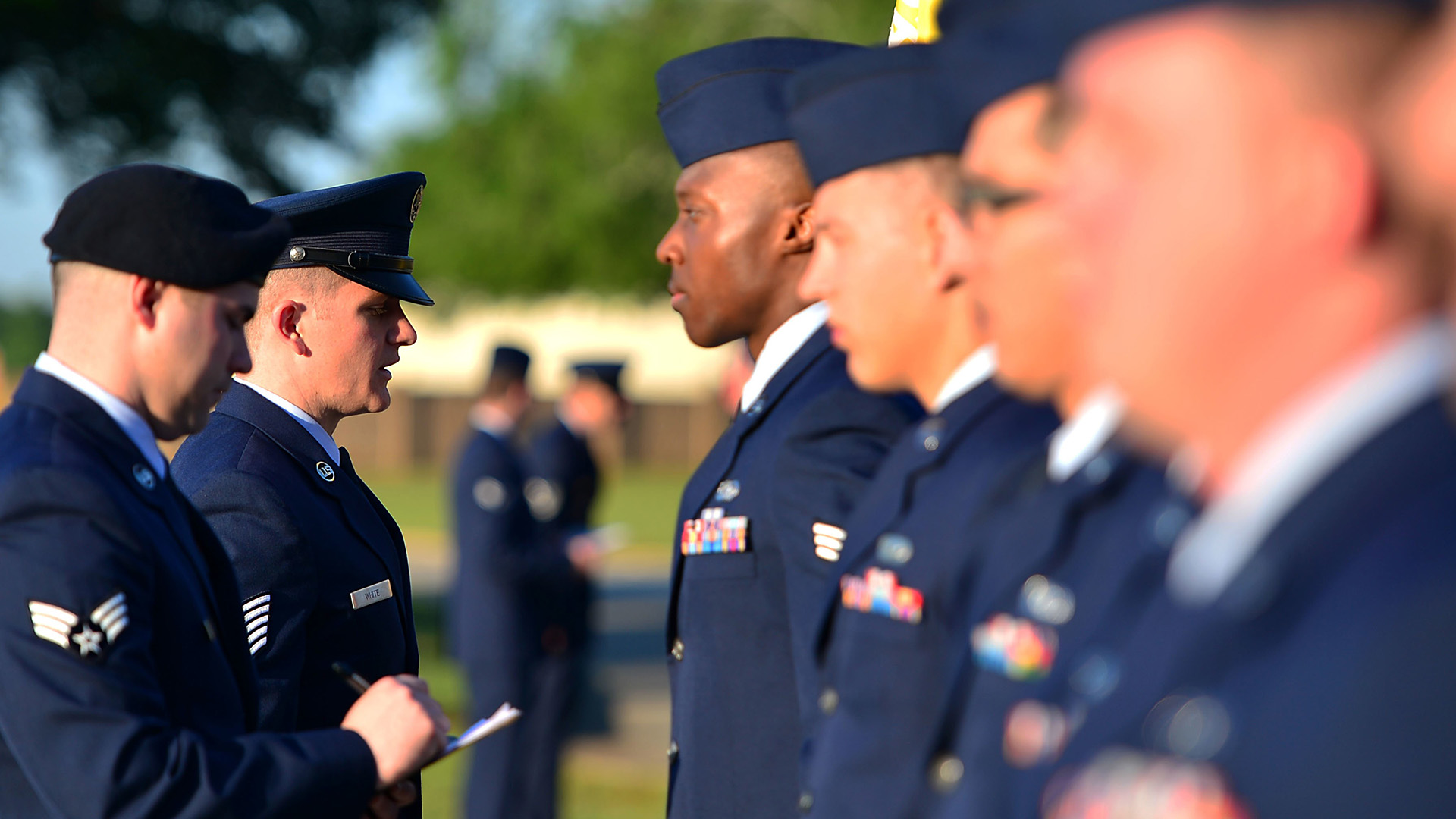

Air Force Chief of Staff Gen. David Allvin announced that service leaders will be conducting more formations for uniform inspections and will review policies and standards that look at ”waivers and the exceptions.” The message is the latest indication that Air Force leaders believe rank-and-file airmen need to more rigidly follow dress and appearance rules than many now do.
“We’re also directing that, episodically, we have the formations come together in uniform to do a couple of things,” Allvin said in a video message to the force Friday title “Standards Update.” “The first thing is to be able to look at yourself, look at your teammate, hold yourself and him or her accountable to ensure that you’re in standards.”
Allvin did not specify what the review would entail. An Air Force spokesperson confirmed that it would look at uniform and appearance issues.
“Although the initial review of policies and standards largely relates to dress and personal appearance, the scope is not limited to those only,” the spokesperson told Task & Purpose. “The goal is to ensure all policies and standards are easy to understand, easy to comply with and easy to enforce.”
Allvin’s message is the latest round of senior Air Force leaders linking service-wide job and performance “standards” to strict enforcement of dress and appearance rules. In June, the head of Air Combat Command announced that the roughly 70,000 airmen under his command would face uniform inspections and waivers allowing them to grow beards for religious or medical reasons would be reviewed.
The service’s emphasis on standards also comes as the latest National Defense Authorization Act, or NDAA, requires Air Force leaders to brief Congress about a possible pilot program that would allow airmen to grow beards.
But an Air Force spokesperson told Task & Purpose the review announced by Allvin on Friday is not related to any of the requirements in the latest NDAA.
“Adhering to uniform standards is essential for building the daily muscle memory needed to uphold and enforce high standards across the board,” the spokesperson said. “This review is not in response to any single incident, but rather reinforces the importance of maintaining consistent standards. As Airmen work together to accomplish daily mission requirements, they build trust in one another, knowing that standards cannot be overlooked. This trust ultimately translates into stronger, more effective units in combat.”
For most of his video message, Allvin framed the review in terms of safety concerns. Over the past few years, Allvin said, the Air Force has implemented some policies and standards that are so complex and difficult to implement that some airmen believe they choose which ones to follow.
“This is where the danger lies, because as airmen decide for themselves whether they should comply with a tech order or safety regulations or other instructions, they make the wrong choice that’s uninformed,” Allvin said. “And the damage is to property, is to our equipment, but most importantly, we get airmen injured or killed,” Allvin said. “That’s what at stake, and that is what is driving some of these decisions.”
The video includes imagery of a funeral detail carrying a flag-draped coffin.
Allvin did not cite any specific examples of policies that have proved “complex and difficult” for the Air Force to implement. But the video does include photos of an overturned Air Force vehicle and a severely damaged B-1B bomber, images that mirror recent real-world Air Force mishaps. In June, a vehicle crash at Malmstrom Air Force Base, Montana, involving a Humvee killed one airman and injured five others. Also, an investigation into a B-1B crash last January at Ellsworth Air Force Base, South Dakota blamed the incident on “unsatisfactory levels of basic airmanship, an inadequate focus on foundational governing directive knowledge, and an overall lack of discipline.” A week later, a colonel who oversaw B-1B pilots and aircrews at the base was fired.
“So, in the weeks and months to come, we are going to be reviewing some of these policies, the waivers, and the exceptions, and we’re going to be reviewing them to ensure that they are easy to understand, easy to comply with, and easy to enforce,” Allvin said.
The latest on Task & Purpose
- Here is the military service record for the New Orleans attack suspect
- Driver of Cybertruck in Las Vegas explosion was a Special Forces soldier, Army confirms
- These 2 soldiers will receive the Medal of Honor for their heroism in Vietnam
- The Army once hoped jetpacks could give soldiers the edge in combat
- National Guard soldier dies in Iraq in ‘non-combat’ incident
